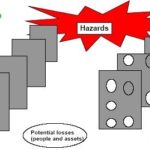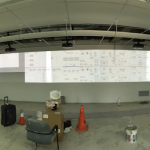Main News
Join us at the Lin & Associates 2017 Workshop
Ian Nimmo will be presenting: The Enemy Within Lurking within our control rooms is a demon, who strikes at the worst possible time in the life of a control room. During the early hours of the morning driven by poor lighting, unhealthy environmental controls, fatigue takes its toll – with no fatigue countermeasures in place…
Read MoreHow to Get Management to Fund Your Alarm Management Efforts
Most of my clients have already implemented some form of alarm improvement process, from low hanging fruit nuisance alarm reduction to full blown alarm rationalization and documentation. For most, their efforts reflect the amount of support they received from management and the resources they had available at the time. Unfortunately, after nearly 20 years, our…
Read MoreAlarm Management and Operator Intervention
(A Safety Layer with Too Many Holes) I’m sure you have heard of Independent Safety Layers, alarm management and operator intervention being one of them. Operators are the fist line of defense when alarms activate so they are a safety layer, however, just because you rationalized your alarms does not mean the operator will respond in…
Read MoreHow Many Operators Do You Need?
To assess the ability to reduce or increase staffing levels, the facility must take an honest look at the quality of the workforce. How are console operators chosen? The move to a dedicated console-operator post should be treated as an upgrade in duties and pay. The selection should not be based on seniority, but on…
Read MoreThe Paradigm Shift in the Control Room
By Paul Noble, CEO, Activu Corporation Today’s control room is not what it was a decade ago. Gone are the days where these spaces were based on analog or nascent digital video technology. Control rooms have instead transformed into networked information centers that play a major role in operations; spaces where information sharing, communication and…
Read MoreUCDS working with Sunoco
UCDS Helps Sunoco Design a New centralized control facility that aims to optimize their Philadelphia refinery Console Operator Bill Johnson, a 24-year Sunoco veteran, makes changes in the operations of the new low sulfur fuels unit from the new central control room. The recently finished low sulfur gasoline unit is the first plant to be…
Read MoreControl Room Operators and the Key Hole Effect
The key hole effect: Your control room operator is monitoring a process with several loops and several points, they have multiple screens and each screen has hundreds of graphics to navigate through, uh oh, several alarms start to activate! The operator begins to navigate through several graphics to determine the problem but has a very limited view because there are so many screens to…
Read MoreGrey Scaled Graphics
Why Switch Your Rainbow Graphics to a Boring Shade of Grey? First of all, you’re not just changing the background color on your existing graphics, your reducing the number of graphics by incorporating human factors into the design, using analog objects, trends, and regrouping objects so that the graphics provide visual interpretation of what’s important…
Read MoreNew Book – Control Room Design guide
We have recently released a new book on Control Room Design. Here is the summary: Since the introduction of distributed control systems into control rooms, the mining, refining, chemical, and power industries have lived with, and suffered from, many behavioral problems common with this design. When Human Factors/Ergonomic design is introduced into a centralized control…
Read MoreUCDS December 2015 News: Automation Safety Webinar
It has been a very different year for UCDS. Our traditional work patterns dramatically changed which meant we did a lot more travelling than usual. I started the year recovering from foot surgery for a snapped Achilles issue but managed to make a trip in March to Sweden to visit with CGM and work on…
Read MoreBorregaard Biorefinery Moves to a Centralized Control Room With the Help of UCDS
Borregaard biorefinery pulp and paper operation in Sarpsborg, Norway, was originally established in 1889. Over the years, significant investments have been made in the facility, including a new pulp-drying machine; new cutting, baling and, reeling equipment; and conversion of the bleaching plant to sulphite pulp. The original digester house, built in the early 1950s, was…
Read MoreNavajo Refining New Mexico Builds a New Training Center
The following was written by Bill Stephens of SourceGas. Navajo Refining Company is part of the HollyFrontier Corporation. We are an oil refining company located in southeast New Mexico. There are approximately 360 employees at our site. While in the development of a new Training Center, Navajo Refining needed design ideas. We contacted UCDS and they designed…
Read MoreSourceGas Pipeline Complies with PHMSA 192.631
The following was written by Bill Stephens of SourceGas. SourceGas LLC (“SourceGas”) and its subsidiaries serve approximately 425,000 customers and operate over 19,340 miles of natural gas distribution, gathering and transmission pipeline, as well as storage facilities in Arkansas, Colorado, Nebraska and Wyoming. SourceGas and its subsidiaries also provide gas transportation, in-home HVAC and appliance service…
Read MoreInvista Embraces Situation Awareness and Control Room Design
The following was written by Driscoll Staley of Invista, describing his situation awareness and control room design experience with UCDS. The Victoria nylon plant was constructed over 60 years ago and remains a key global supplier of intermediates. Each production unit represents a different molecule required for nylon production and is operated as separate business unit. Control…
Read MoreSasol Lake Charles improves HMI with UCDS
The following was written by David Smith, Process Control Engineer at Sasol. Sasol is an international integrated energy and chemicals company that leverages the talent and expertise of our more than 32,400 people working in 37 countries. We develop and commercialize technologies, and build and operate world-scale facilities to produce a range of high-value product streams, including liquid…
Read MoreRio Tinto Kennecott Case Study: Alarm Rationalization and Management, and More
The following was written by Matt Martin, Superintendent – Production Control of Rio Tinto Kennecott. At Rio Tinto Kennecott, we mine essential elements that make modern living possible. From medicine, food and shampoo, to cell phones, computers, CAT scans and hybrid electric cars, nearly everything you use today relies on materials that we produce. Our mine has…
Read MoreA Lasting Plan for Alarm Management
By Ian Nimmo and Stephen Maddox | Aug 18, 2015 Summary: A well-written alarm management philosophy defines procedures that allow your team to get alarms under control now and for the long haul. Alarm management seems to be a never-ending task: company X hires consultant Y to repair their badly designed and overloaded alarm management…
Read MoreLearn more about our Staffing Studies
It is extremely important to ensure that when changes to the organization are made the safety of the facility is not compromised. As such we strongly recommend a Management of Organization Change study is undertaken. Based on recent incidents, and subsequent recommendations from investigations such as the Baker report, and legislation, such as that in…
Read MoreHuman Factors and Process Safety
API 754 Using Human Factors to Improve Process Safety Following the recommendations of the Baker report into the BP Texas City incident two (2) new American Petroleum Institute (API) recommended practices were published. One of these dealt with the subject of fatigue risk management and the other, the subject of this paper, process safety performance…
Read MoreAchieving Excellence In Operations
Requires Operator Support… Many organizations have appointed a leader to initiate an excellence philosophy for operations and the first thing they discover, improving operations is a major challenge for most managers. Indeed, multiple pressures – competition, more stringent regulation as well as investor and stakeholder expectations – are driving leaders to focus heavily on improving…
Read MoreNew IEC 62682 Webinar
EC 62682 View Webinar Here US national standard has been a recommended practice for a long time now, but the new IEC 62682 specifically calls out management letting them know this is an international standard not a recommend practice. We can help, our customers are achieving the EEMUA 191 alarm…
Read MoreAlarms Revisited: The New IEC 62682 Standard
Many are still struggling to achieve the EEMUA 191 alarm rates (1 alarm per 10 minutes per operator) because they have not embraced the new international IEC 62682 standard. This international standard is a reflection of the ISA 18.2 US national standard, for alarm management. What does this mean to you? How can you ensure…
Read MoreOperator Staffing based on Workload
In today’s competitive environment, all plants are interested in reducing costs to maximize profitability. One fixed-expense area most frequently targeted is hourly staffing level. If one duty station can be eliminated in a plant that operates 24 hours a day, head count can be reduced by at least four full-time employees. Taking into account salary,…
Read MoreCost Estimate for a New State of the Art Control Room
Many managers and company executives are focusing on achieving company goals and objectives. The automation system and the control room operators significantly impact the business. Bottom line: control room operators are the first line of defense during abnormal situations, if they detect problems in time, they can reduce costs. How well they perform is dependent…
Read MoreMarch 2015 news
The months are ticking by already, and we are working on a variety of projects. I am busy working on Large Screens Display projects both here in the USA and in Trinidad. Dave continues to love working in Canada and everyone else is working on a variety of projects from alarm management to High Performance…
Read MoreNew Book from UCDS
Operator Effectiveness and The Human Side of Error Operators are the first line of defense when abnormal situations occur. We rely on operators to be vigilant and predictive when process problems occur. Humans make mistakes but when operators make mistakes it could have a major impact on the business. We must improve situation awareness, reduce…
Read MoreFebruary 2015 News from Ian
2015 has started strong with a lot of new opportunities. As usual, this time of year David volunteers to head north and enjoy some snow on the ground, while I stay in Phoenix and enjoy the 80 degree weather; well-done Dave. He also spent a week in Houston doing some High Performance HMI work. I…
Read MoreWhy We Improve Operator Effectiveness
Alarm Management is one of the control room systems that affect operator performance, but there is a bigger picture. When we look at downtime, we need to think about why we have operators in the control room and ask: are they effective at mitigating and managing abnormal situations? Are they performing at maximum level? Can…
Read MoreHappy new year, High performance HMI and Human Factors
Happy New Year to all our friend’s and clients! Who knows what this year will bring as we start the year with falling oil prices and low fuel costs which helps many businesses but often leads to loss of work for an organization like ours. We have been through a few of these turns over…
Read MoreReduce Unplanned Downtime Caused by Process Upsets
Alarm Management is one of the control room systems that effect operator performance but there is a bigger picture. When we look at down time, we need to think about why we have operators in the control room and ask, are they effective at mitigating and managing abnormal situations? Below is an example of the…
Read More



